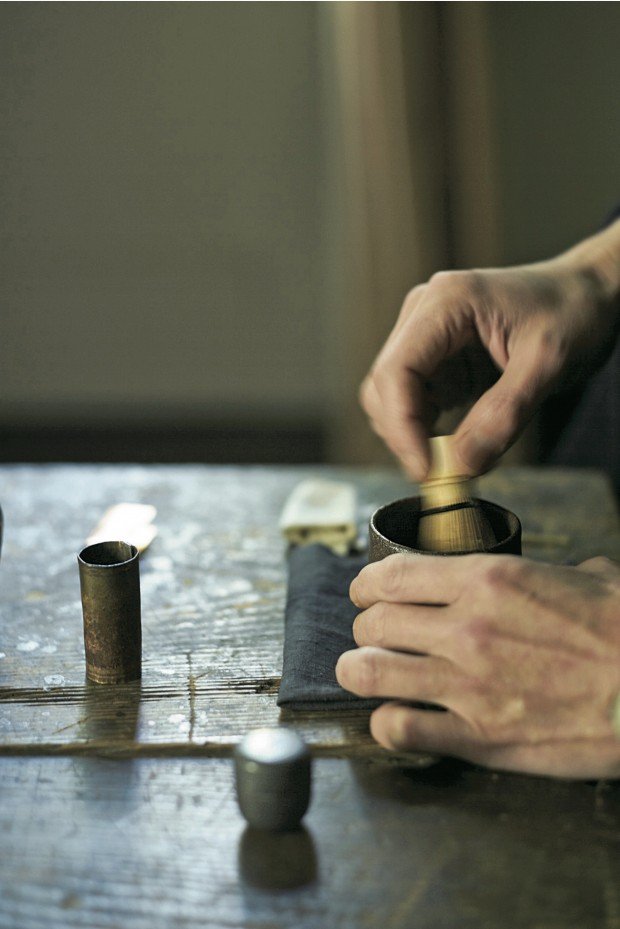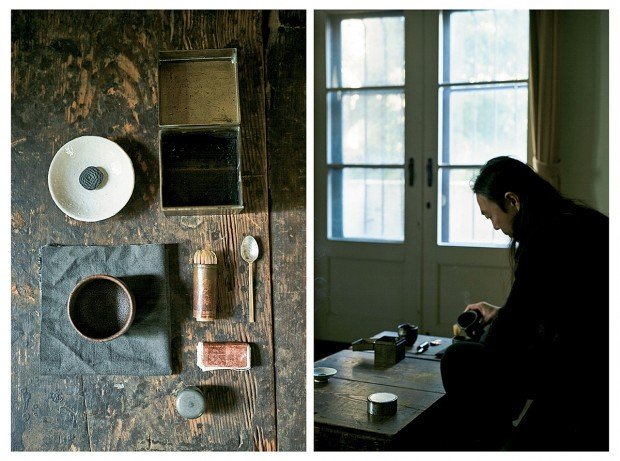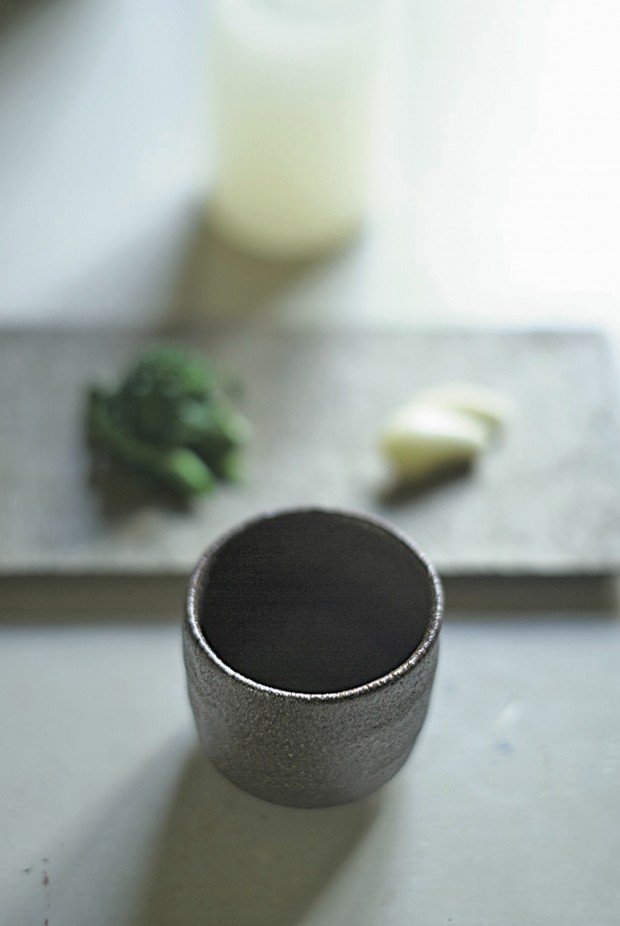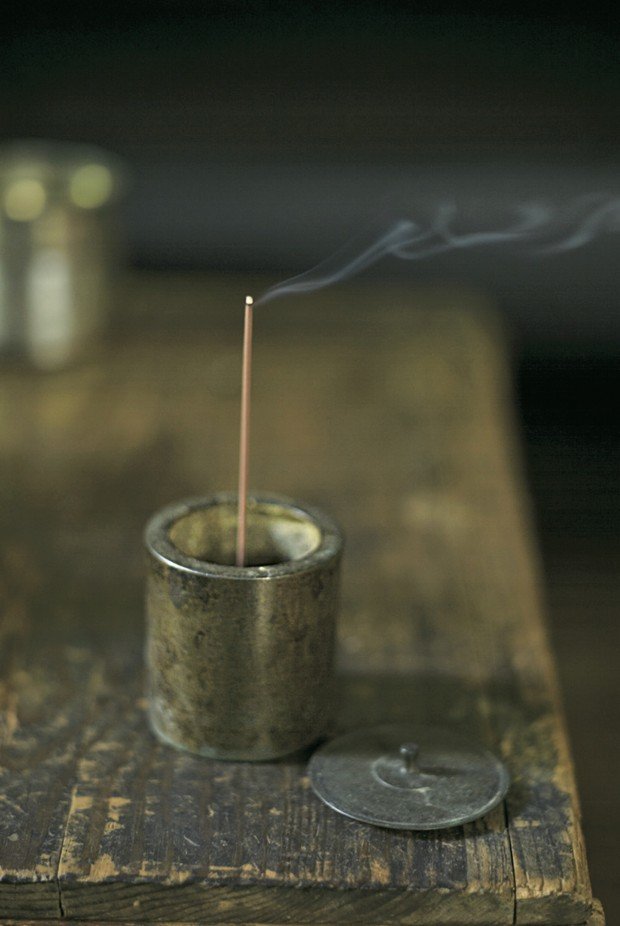Photographs by Shinohara Hiroaki.
Personalized tea time: my “three treasures” in tea ceremonies
 Osamu Saruyama uses a tea whisk to make a serving of matcha.
Osamu Saruyama uses a tea whisk to make a serving of matcha.
We interviewed Kazumi Aso, Osamu Saruyama and Aya Eto who incorporate Chanoyu, or the practice of Japanese tea, into their everyday enjoinment. Each one has developed their own style and way of enjoying tea, from their approach to the activity itself to their unique and even bizarre choices of equipment. Here, we will introduce each of their “three treasures” that sets the tone and theme of their tea ceremony.
“Three treasures” of Saruyama’s tea ceremony
 Osamu Saruyama / Designer. Owner of the Saruyama store, he himself designs and makes tea utensils featured at leading specialty stores such as Kaikado in Kyoto and also cooperates with other designers in developing such goods.
Osamu Saruyama / Designer. Owner of the Saruyama store, he himself designs and makes tea utensils featured at leading specialty stores such as Kaikado in Kyoto and also cooperates with other designers in developing such goods.
1. His favorite saké cup turns into his tea cup
His favorite cup for saké is just about six centimeters across and serves as his favorite green tea cup as well. The strength it draws from the clay of Mt. Koya seems to convey itself with each touch of the hand or the lips. The cup was crafted by Shiro Hamanaka, the master of the Ooya Kiln, who makes Hagi ware and also creates more orthodox tea ceremony ware.
 Saruyama’s favorite cup for both saké and green tea crafted by Shiro Hamanaka.
Saruyama’s favorite cup for both saké and green tea crafted by Shiro Hamanaka.
2. Incense wafting from old copper
An old covered container of copper, likely originally used on a Buddhist altar for burnt matches and the like, has become Saruyama’s incense burner. Today the incense wafting through the air is joined by a Bach cello suite, performed by German cellist Franz Amann.
 Saruyama uses an old copper as an incense burner.
Saruyama uses an old copper as an incense burner.
3. Black tea cakes, specially ordered from Kyoto
Black tea sweets are just the thing to fit a life of chic. These are a famous product of the Kagizen Yoshifusa store in Kyoto, “Kikujyuto” confectioneries using a superlative grade of traditional Japanese sugar. They have to be specially ordered and are tinted with all-natural bamboo charcoal. The small kohiki bowl is made by Mitsufumi Kitamura of Shizuoka.
 “Kikujyuto” confectioneries from Kagizen Yoshifusa store in Kyoto.
“Kikujyuto” confectioneries from Kagizen Yoshifusa store in Kyoto.












